A Guide to Sewing Machine Feet
This post may contain affiliate links, which means I may receive a small commission, at no cost to you, if you make a purchase through a link. As an Amazon Associate I earn from qualifying purchases.
In this post, I’m going to give you a guide to sewing machine feet and what each one does. I’m going to go through all the sewing machine feet I own and give you an overview of each one.
Of course, there are many different sewing machine feet than the ones listed below, each machine is a bit different and there are many options but hopefully this post will help you out and assist you with understanding what your sewing machine feet can do for you!
I have a Baby Lock Jubilant so the presser feet I will be listing will belong to my specific sewing machine. Use code SAVE10-A424 to save 10% on any sewing feet linked below or Baby Lock sewing machines or accessories!
The General Foot
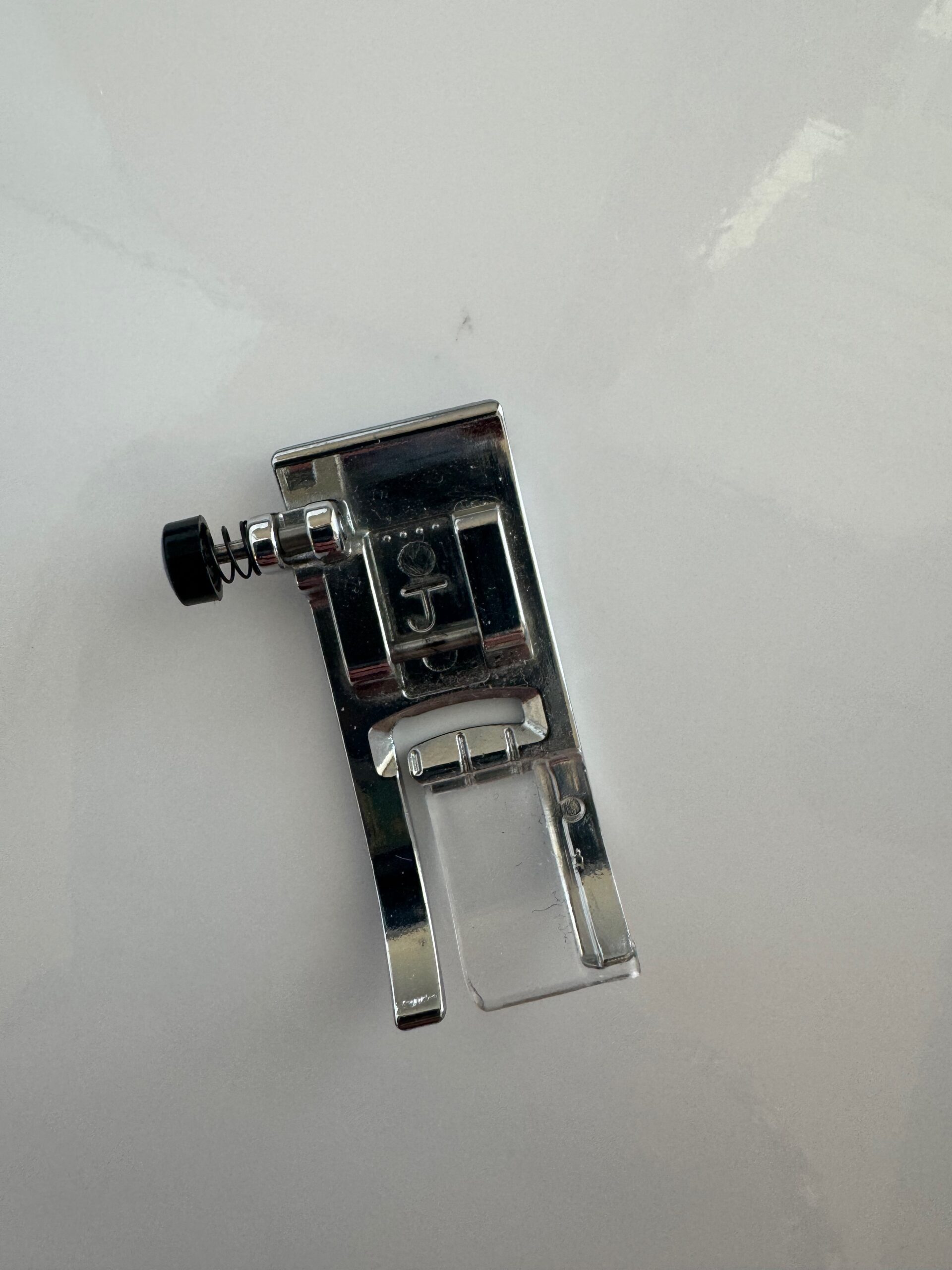
The universal sewing foot is the main presser foot that probably will come with your sewing machine. This sewing foot is used for most general sewing tasks and is probably the one you’ll be using the most for sewing seams, hemming, and mending.
The Invisible Zipper Foot

The invisible zipper foot is a special sewing machine foot that allows you to sew close to the zipper and has little groves for the zipper to go through making the sewing process much smoother. I use this one frequently.
The Open Toe Foot
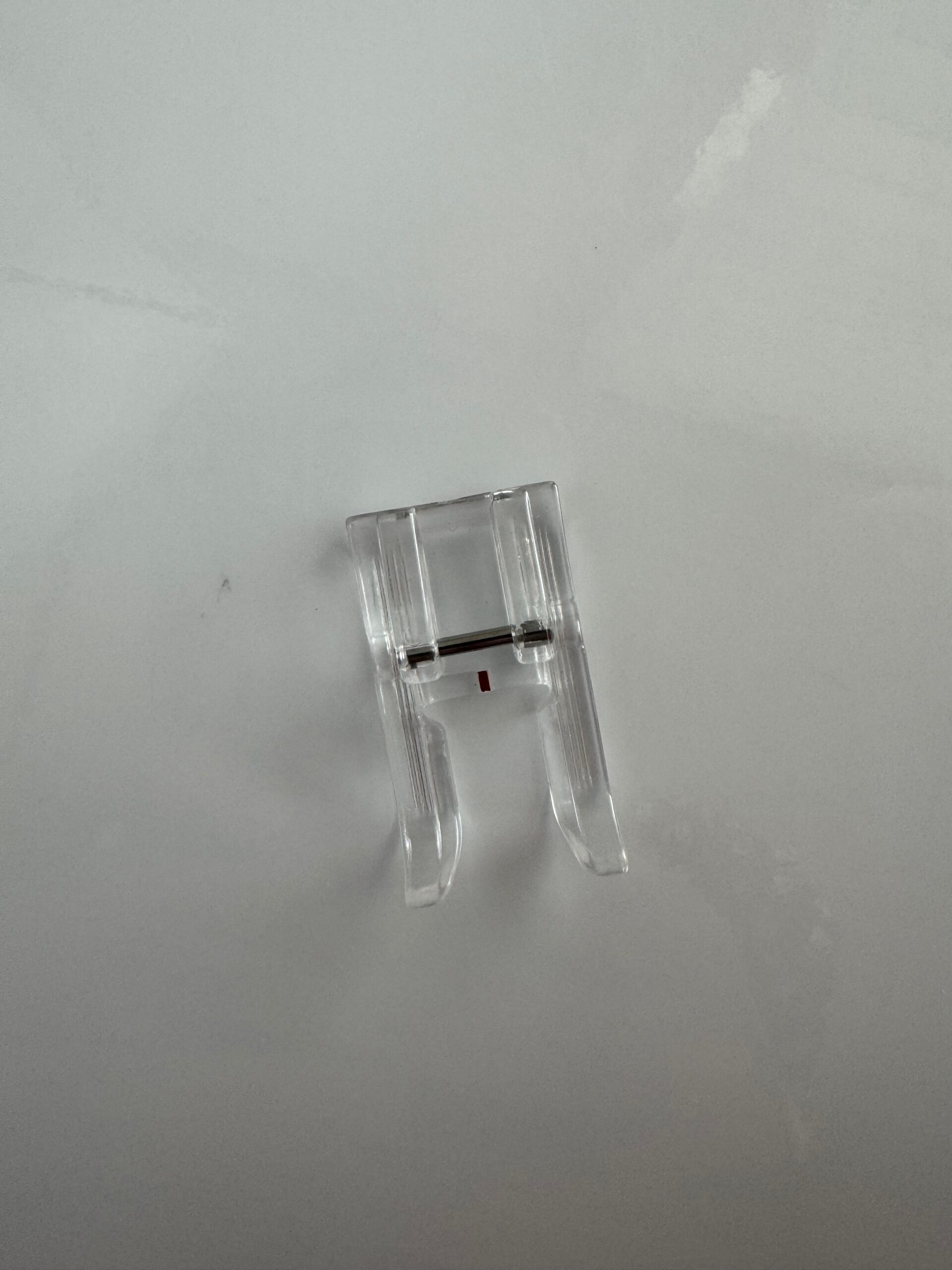
I legitimately had to laugh at the name of this one! But, this is a very useful sewing foot that allows you to see what you are sewing better and also is used to sew appliqué or decorative stitching because of the larger hole it’s much easier to adjust the fabric or applique as you go and also see where you are sewing.
Click here to shop the open toe foot!
The 1/4″ Foot with Guide
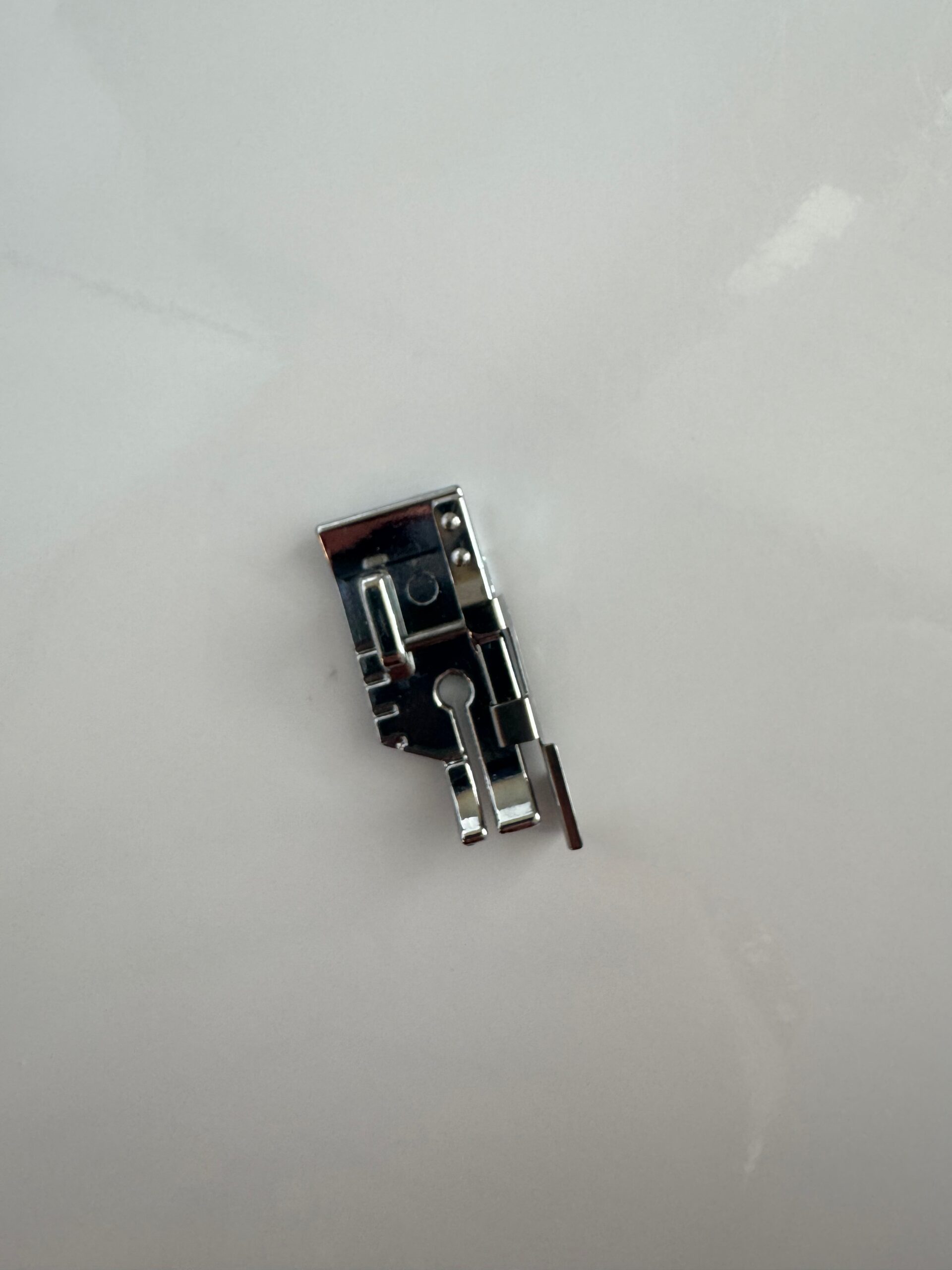
This sewing machine foot is used to assist with stitching the perfect 1/4″ seam. Whether you are sewing a 1/4″ seam or hem or using this foot for topstitching it’s very efficient. I love this one and use it!
Click here to shop the 1/4″ foot with guide!
1/8″ Hemmer Foot

The 1/8″ hemmer foot is awesome for sewing small tiny hems that are nearly impossible to do without it. It helps curl the fabric around to create a 3mm double hem.
I have not mastered the skill of using this foot yet but I’m going to keep trying because I know it will be great for hemming!
The Roller Foot
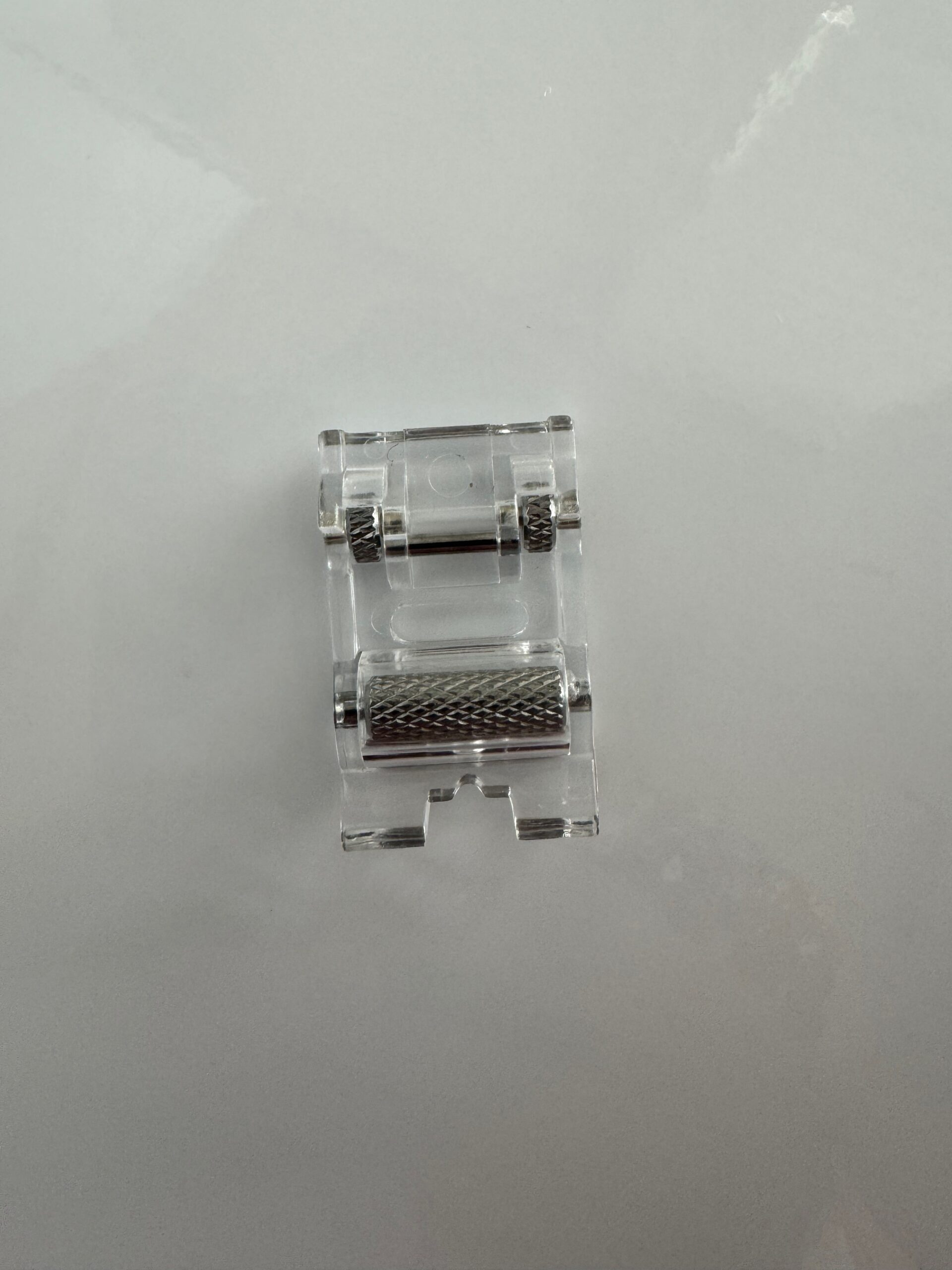
The roller foot is used to assist you with sewing difficult fabrics such as silk, leather or even velvet etc. As the name suggests this sewing foot has a small roller on it that allows the foot to glide over the fabric more smoothly and assist with feeding the fabric through the machine.
Be sure to try this one out the next time you are sewing!
The Braiding Foot
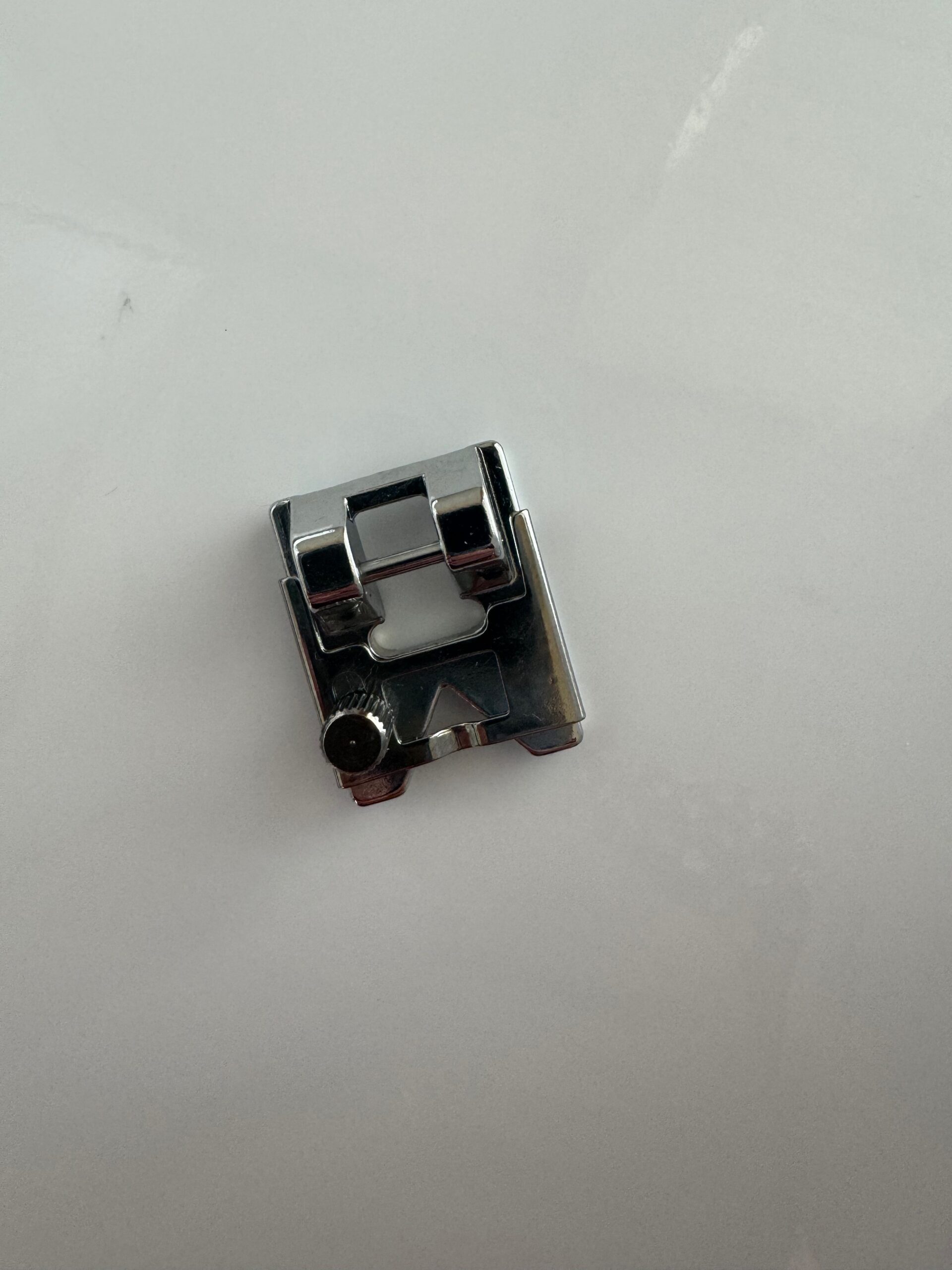
This one is not such a commonly used sewing foot however, if you are working with a lot of embellishments this foot is a must-have. You can use it to stitch on ribbon, cording or elastic to add a touch of flare to your outfit.
Mine is also adjustable which makes it even better.
Click here to shop the braiding foot!
The Shirring/Gathering Foot

This sewing machine foot is used to make gathering fabric easy and fast. You can increase your stitch length as needed to adjust the gathers. This gathering foot makes your gathering even however, you can adjust the gathers once you are finished stitching by pulling the bobbin thread.
The Buttonhole Foot

The buttonhole foot is used to create button holes on your garments or whatever project you are sewing. This foot is a must have if you plan on making your own clothes. You never know when you need to sew a buttonhole.
The Teflon Foot

The Teflon foot can be used for general sewing purposes but it is especially helpful for sewing with fabrics such as leather, suede or vinyl the Teflon foot creates a smoother surface for the fabric to slide through making the sewing process easier.
The Cording Foot – 7 Holes
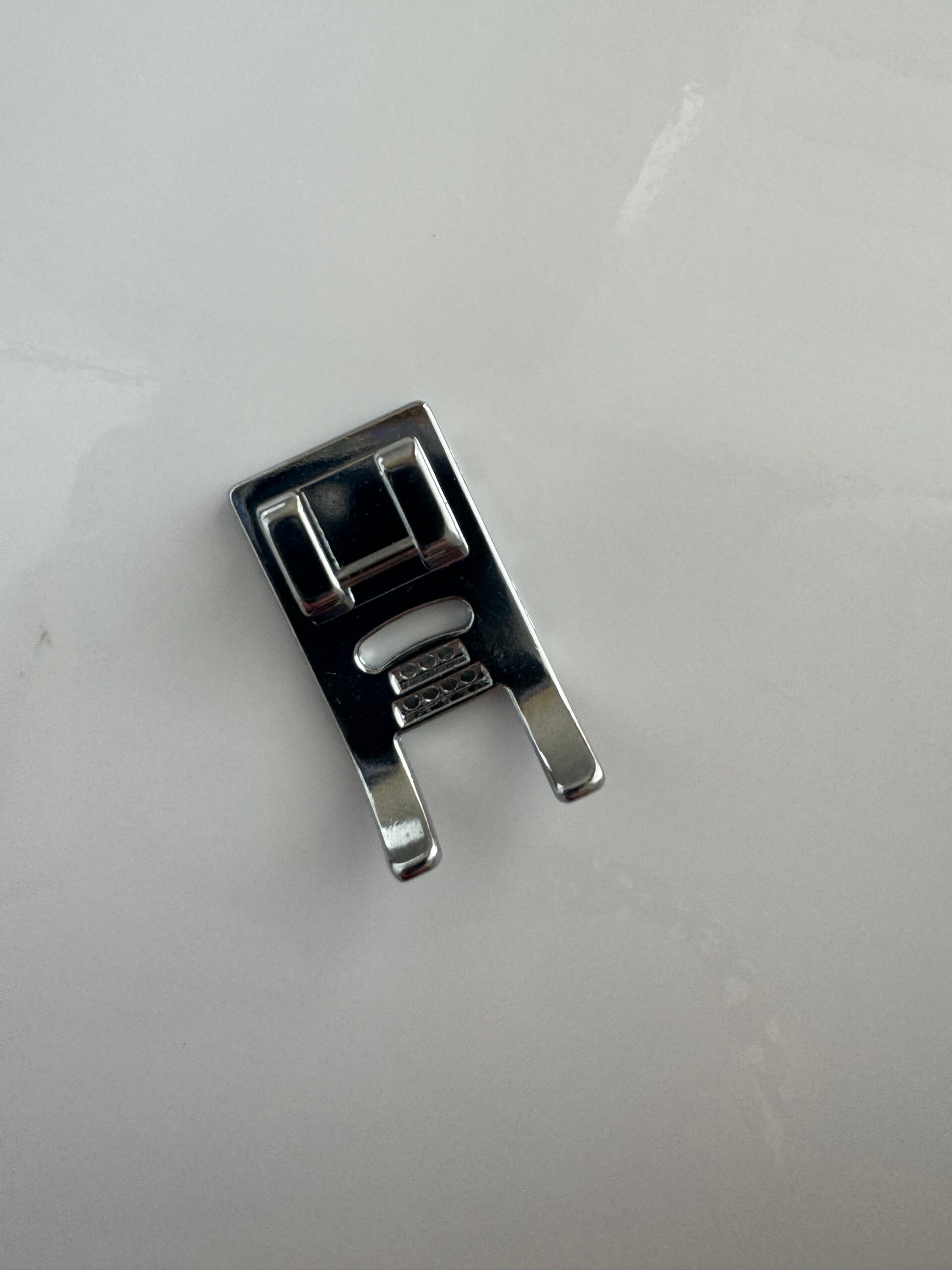
This cording foot is used to keep cords laying perfectly side by side as you stitch them down. This foot is used to create decorative stitching and can be very convenient if you plan to do a lot of this type of sewing.
The Double Cording/Welting Foot
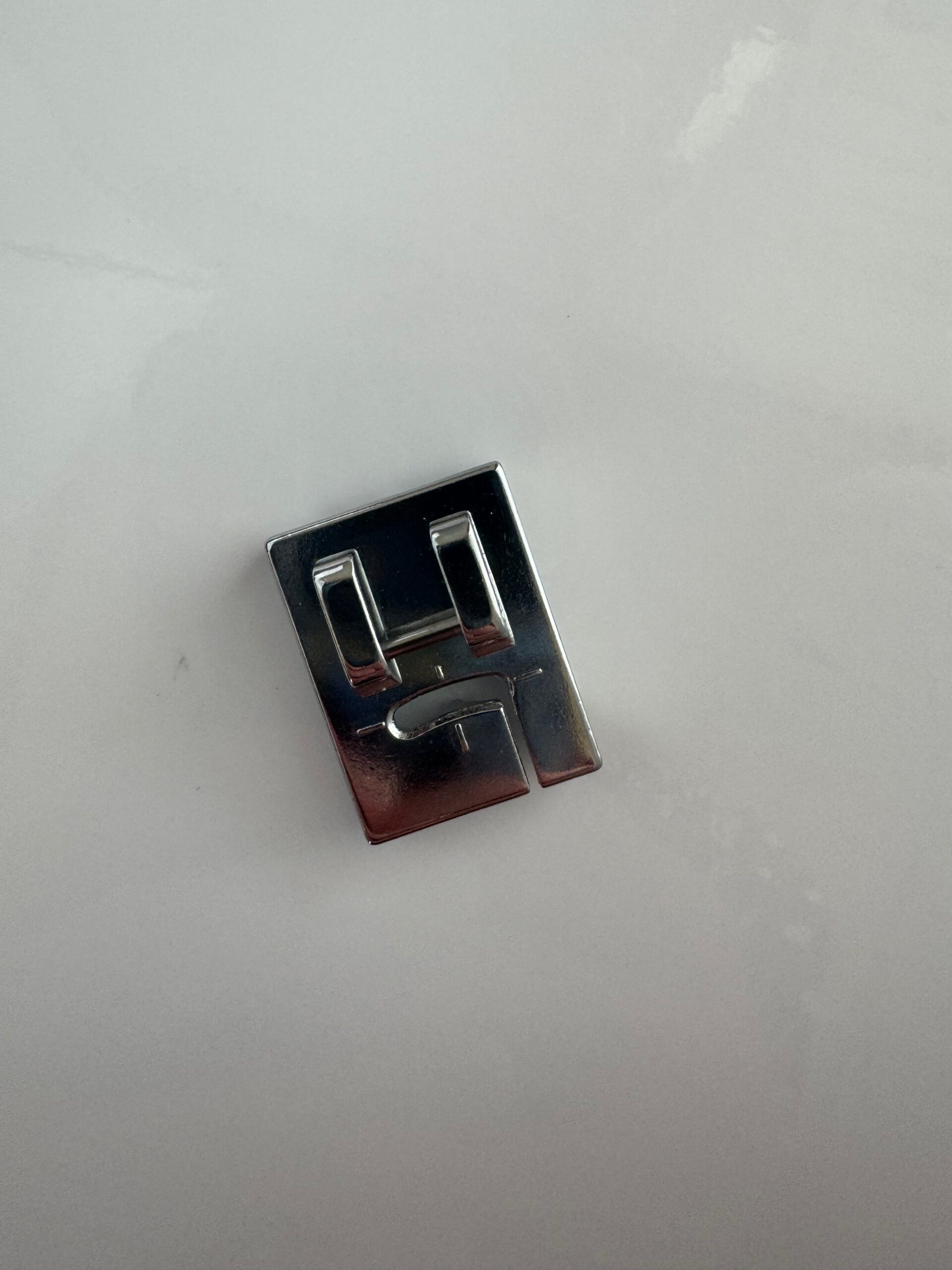
This type of sewing foot is particularly helpful for sewing single or double rows of cording to fabric. It’s the type of sewing you might see in upholstery. The double cording/welting foot has two grooves on the bottom to allow the cording to move smoothly under the presser foot.
Click here to shop the double cording/welting foot!
The Edge Joining Foot

This sewing foot is used to join two pieces of fabric together easily. By using the guide in the middle of the foot, you can use it to attach things like lace or trim to the edge of fabric.
Also, if you need a guide while sewing this foot is really useful to help you sew perfectly. Another recommendation is to use it for stitching-in-the-ditch.
Click here to shop the edge joining foot!
The Blind Stitch Foot
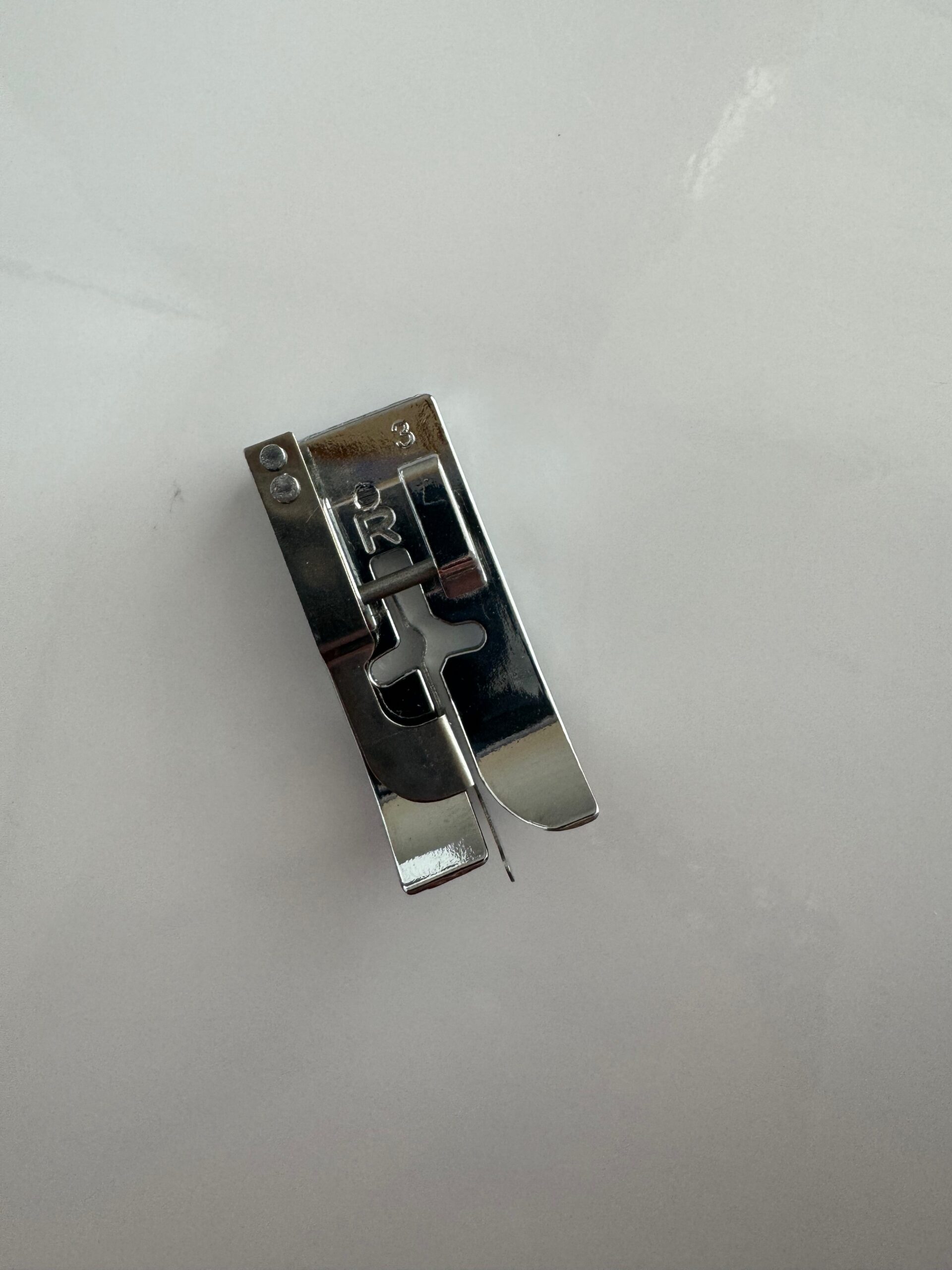
The blind stitch foot as the name suggests is used for blind stitching. By adjusting the settings on your machine and using this foot you can create a stitch that is nearly invisible from the right side of your garment. You can use this stitch for hemming creating a beautiful finish.
Click here to shop the blind stitch foot!
The Button Fitting Foot
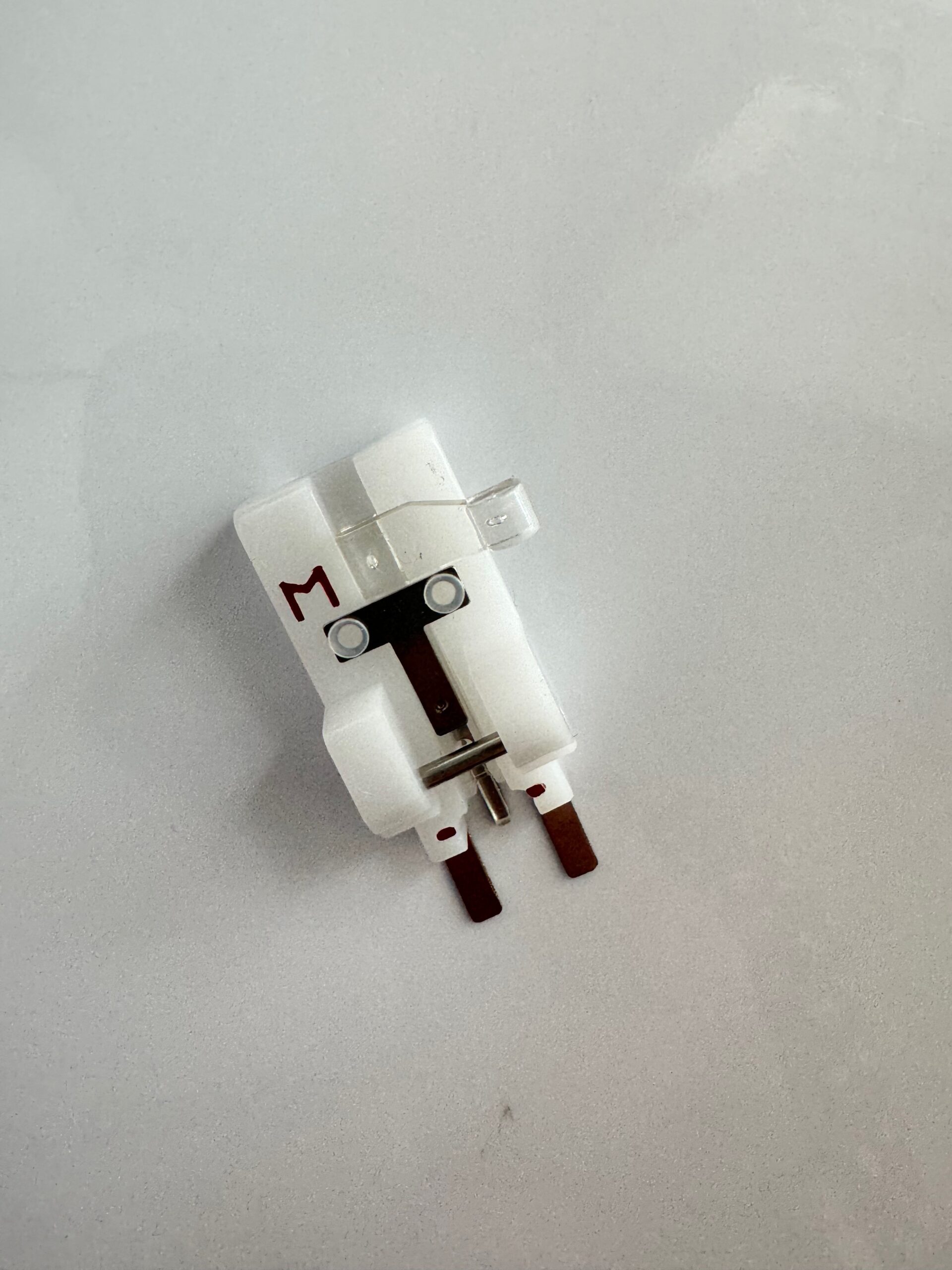
Are you tired of sewing buttons by hand? Get this nifty button-fitting foot that allows your sewing machine to do it for you. You can even use this on thicker fabrics!
Click here to shop the button fitting foot!
The Overcasting Foot
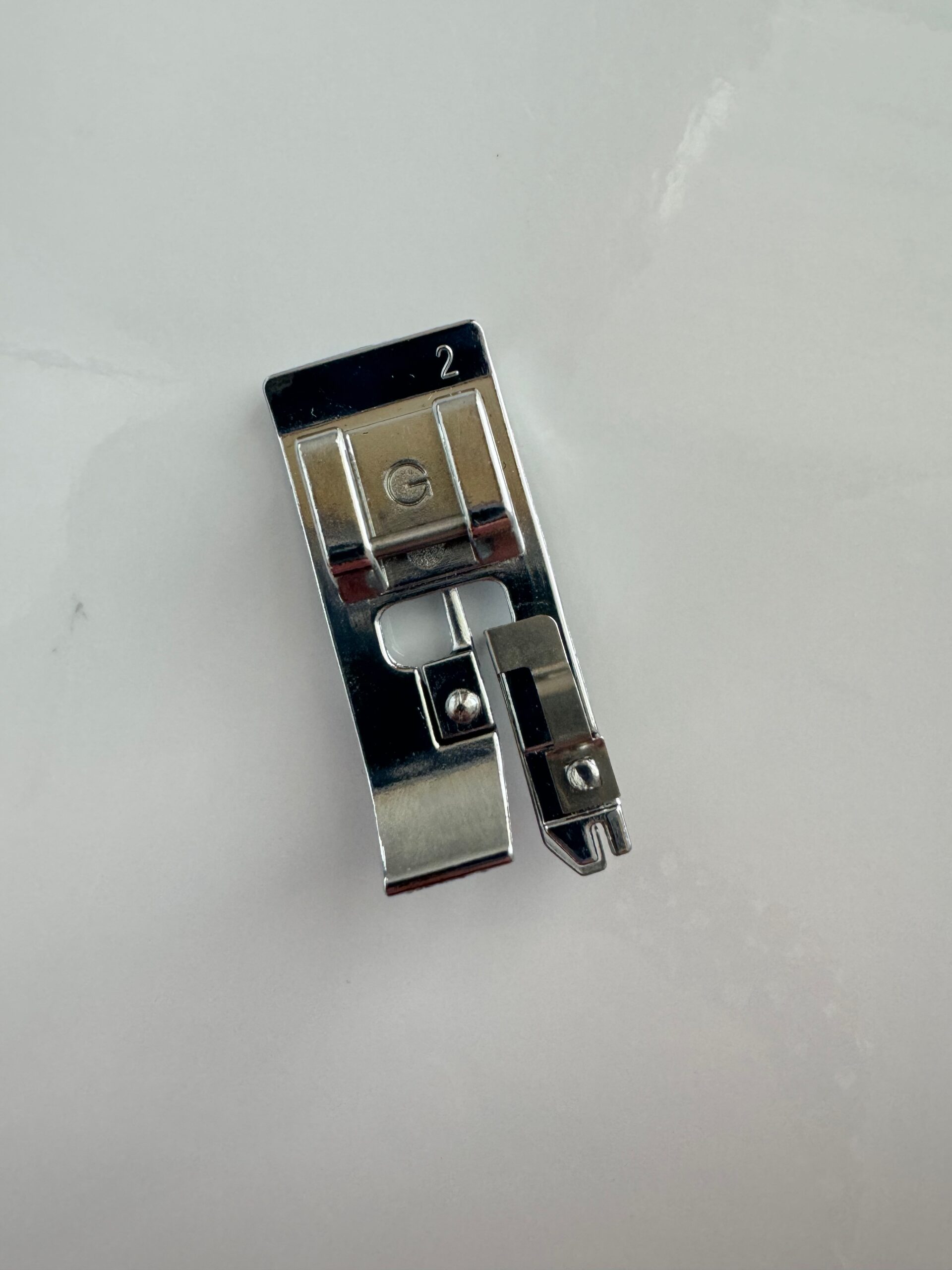
The overcasting foot is used to create an overcast stitch around the edge of your fabric. If you don’t have a serger you can use this as another way to finish your edges with just your sewing machine. It can also be used for decorative stitching.
The Zipper Foot

The regular zipper foot is used to attach a zipper and is narrower than most to allow you to stitch along the edges of a zipper easily. The invisible zipper foot would be used for invisible zippers and the regular zipper foot for lapped zippers or even exposed zippers.
The Pintuck Foot
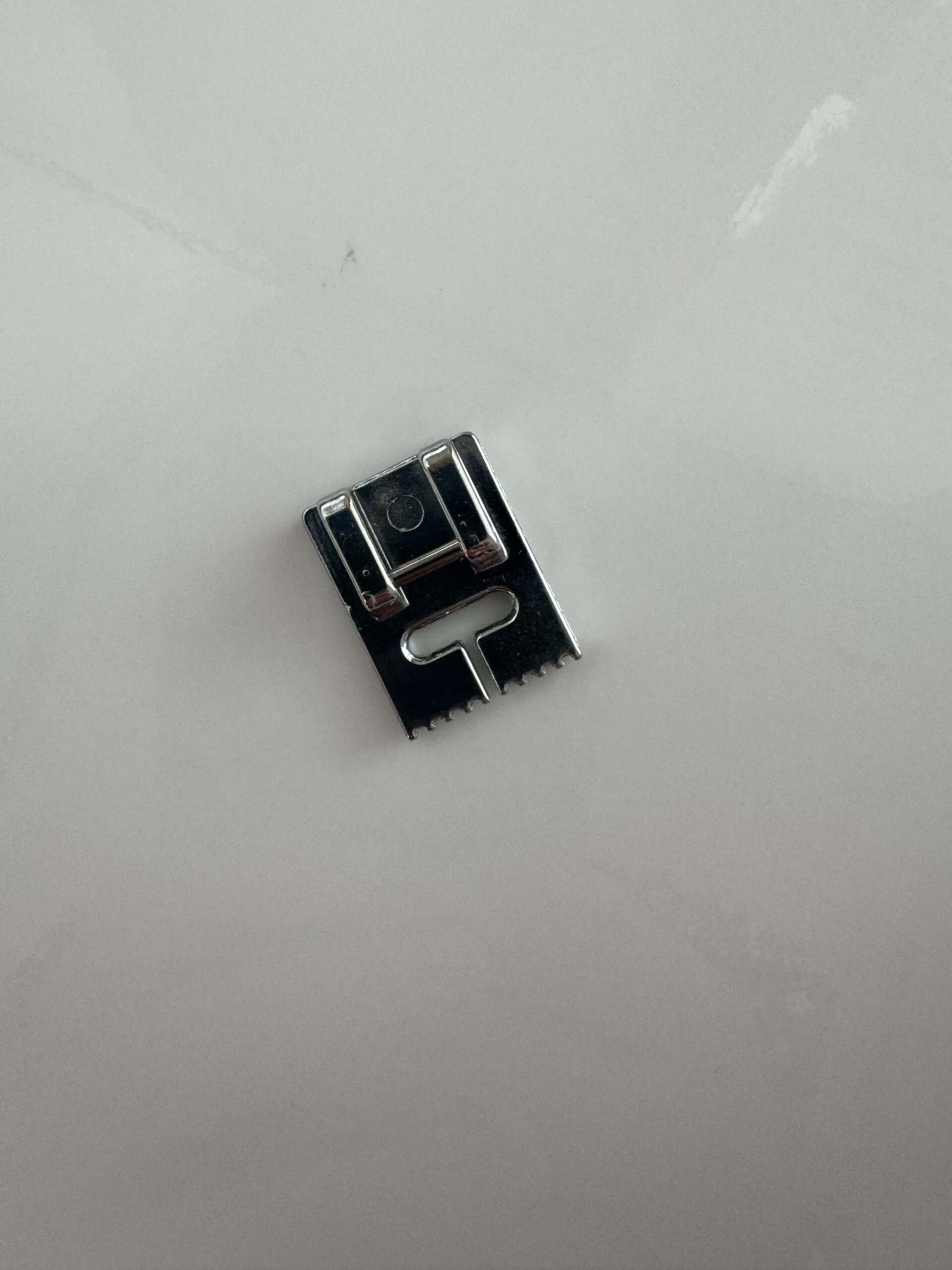
This sewing foot is used especially for creating little pintucks on fabric. You may use this as a decorative feature on a garment sleeve. You can use this foot with a double needle and small cording to create the perfect pintuck.
What sewing machine feet do you use the most often? I’d love to hear from you in the comments!
If you’re interested in learning how to thread a sewing machine, check out this post!

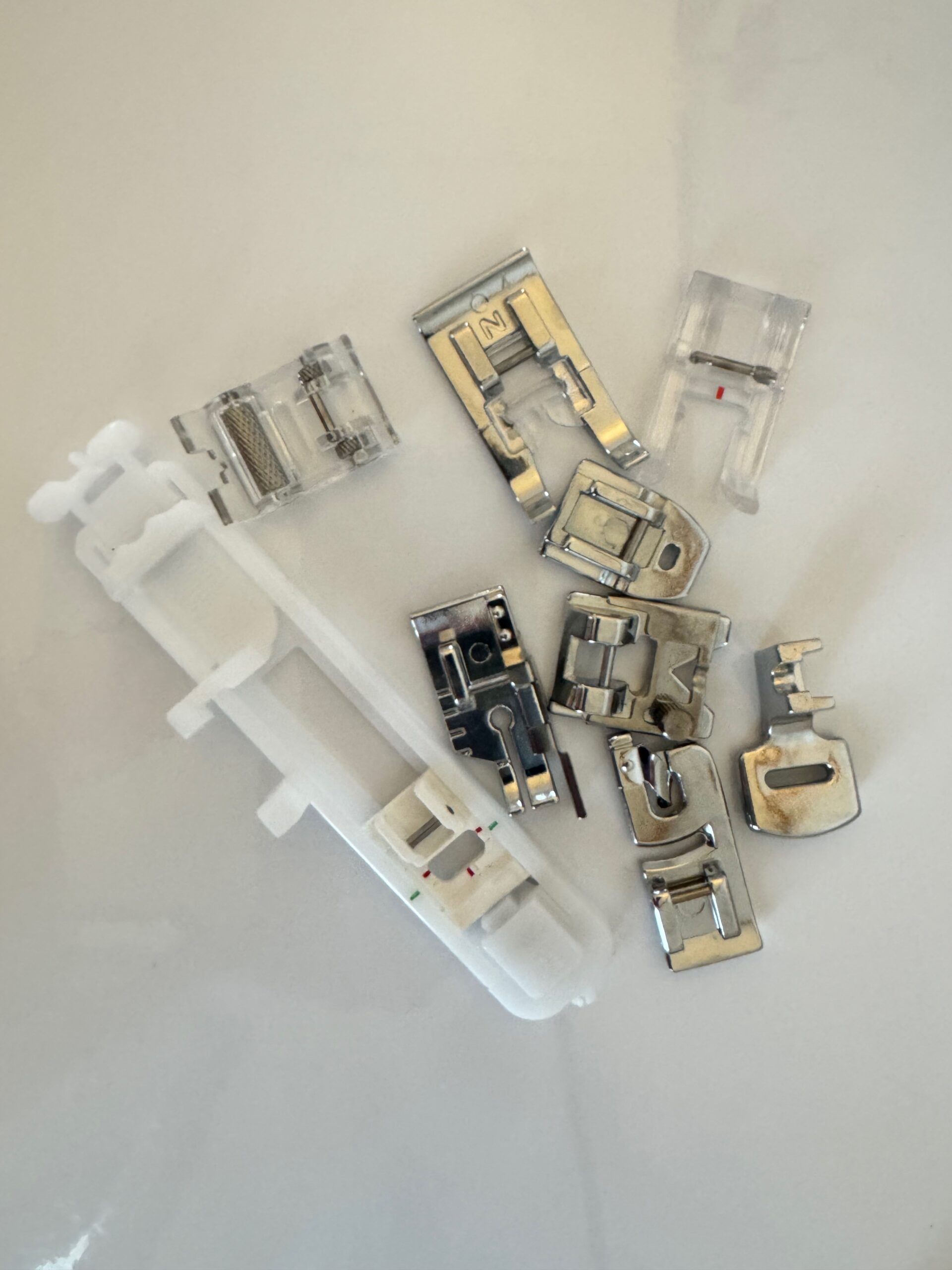
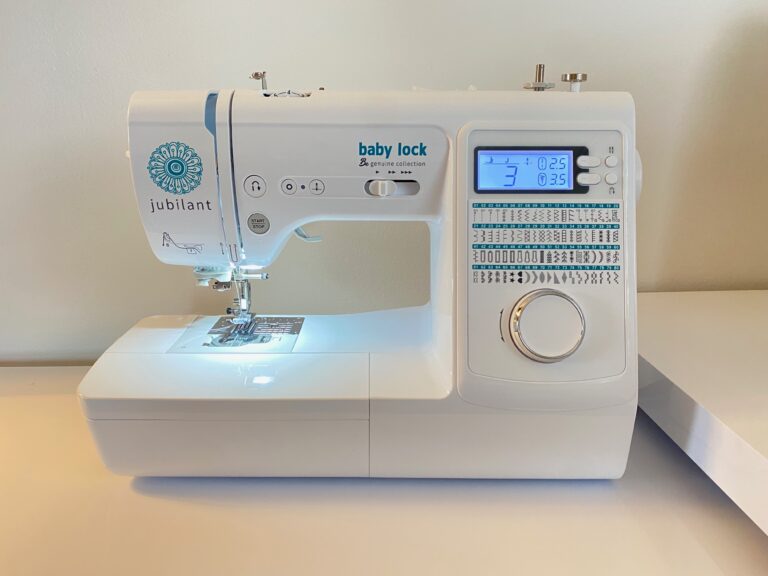


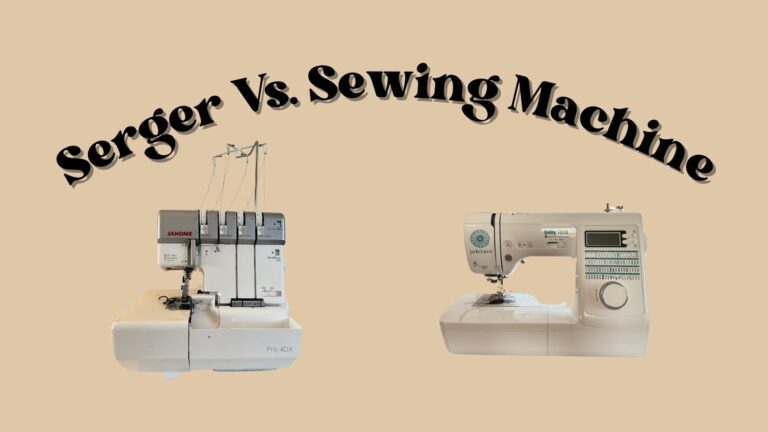
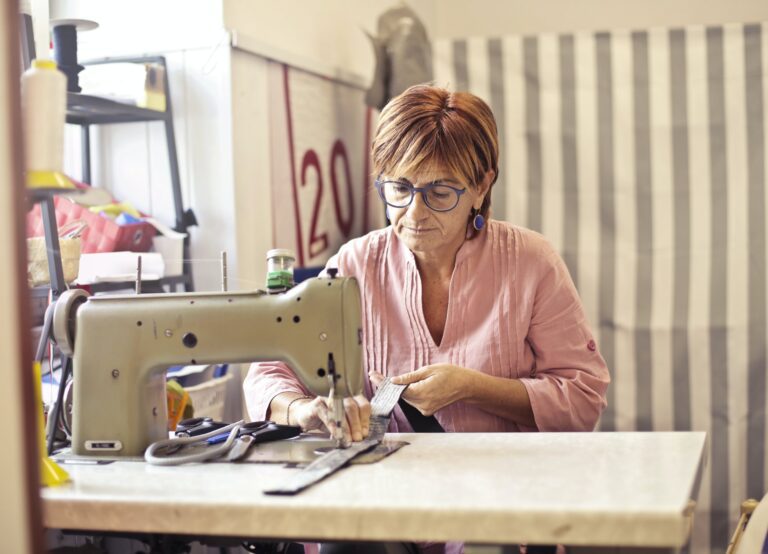

So informative and easy to read! Thank you!
Thank you! 🙂
I love sewing! What a helpful guide in sewing machine feet! Thanks for putting this together!
My pleasure! So glad you enjoyed!
Your detailed breakdown of sewing machine feet is incredibly helpful for anyone looking to expand their sewing! I particularly appreciate the insights into how each foot functions and its practical applications. The variety of options, from the Invisible Zipper Foot to the Blind Stitch Foot, truly showcases the versatility of sewing.
I’m so glad you found this informative! Thank you!
I really appreciate this guide on sewing machine feet—it’s super helpful! It’s great to have a clear overview of what each foot can do, which can make sewing projects much easier and more efficient. This kind of detailed explanation is perfect for anyone looking to better understand their sewing machine and improve their sewing skills. Plus, it’s always exciting to learn how to make the most out of the tools we have!
Yes! Sometimes we don’t know how convenient it is to try out new sewing feet… they can really make the sewing process smoother if you know which one to use.
Great information on sewing machine feet. Very helpful tips!
I’m so glad you found this helpful!
Sharing this with my mom! She loves stitching.
Thank you! I appreciate your support!
This is awesome. I have always wanted to learn how to sew. This article gives me great insight into the different sewing machine feet. Thank you for sharing.
That’s Awesome! Sewing is a lot of fun even if you just do it for your own enjoyment!
As an avid sewer, I had no idea half of these existed! Def need the hem one!!!!
I know it’s crazy how many there are and this is still not all of them!
What a comprehensive guide on sewing machine feet. I read through it in awe.